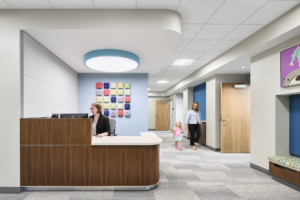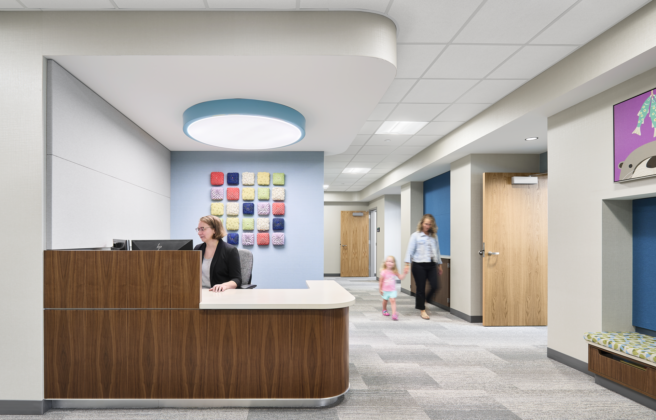For decades, investments in behavioral and mental health care languished, leaving a significant portion of the United States population without access to both facilities and personnel who could help patients manage their illnesses.
As healthcare organizations find their emergency rooms inundated with patients who suffer from mental illness, and communities discover their jails housing people who are more mentally sick than criminal, that investment trend has started to shift. Yet, as money becomes available to create better and new spaces for behavioral health, knowing how to properly invest that money in strategies that achieve the right outcomes is as much of the challenge as finding the money, itself.
BWBR’s Rick Dahl, AIA, and Scott Holmes, AIA, ACHA, LEED AP, tackle that issue on investment and strategies in a new white paper, “Investing in Behavioral Health for Better Outcomes: Value-driven facility improvements to promote more effective care.” The paper takes a deeper look into investment in behavioral and mental health facilities, looking beyond initial construction costs to evaluate the qualitative and effective strategies that reduce staff injuries, improve patient outcomes, and change the way communities look at mental health care.
“For more than 20 years, the environments in which people receive and staff provide traditional care have dramatically changed, becoming more patient-centered and comfortable while also more efficient and intuitive,” said Dahl, a principal at BWBR with more than 30 years of experience in healthcare design. “However, the strategies that work for people with physical ailments are not always transferrable to mental health centers. Details carry significant importance for people who see details differently than a majority of the population.”
“Previously, mental health centers put a premium on security and injury prevention,” said Holmes, who, together with Dahl, has designed a number of new facilities taking a different approach to mental health care. “This approach sacrificed dignity and empathy and discounted the space as an important part of the care protocol. What we’re learning is that organizations actually can improve both care and safety by investing in elements that make the care more accessible and hopeful.”
The paper addresses first costs, operational costs, opportunity costs, and society costs, breaking them down to understand how they influence access to care, patient response to care, staff recruitment, and the image of the quality of care.
The paper comes in the midst of a renaissance in behavioral health investment. A 2017 Healthcare Construction Survey found 50 percent of healthcare organizations indicate a behavioral health specialty hospital projects is planned or under construction. In the Upper Midwest, Regions Hospital in Saint Paul, Minn.; University of Minnesota Masonic Children’s Hospital in Minneapolis; and Gundersen Health in La Crosse, Wis., have all opened new facilities.
In 2017, Pine Rest Christian Mental Health Services will open an expanded Van Andel Center for adolescents and young adults at its facility in Cutlerville, Mich.
Those come on the heels of Avera Behavioral Health Hospital in Sioux Falls, S.D., that took a revolutionary new approach to behavioral health design a decade ago with open nurse stations and floor plans, flexible connector hallways, and entrances into units that protected patient privacy and dignity. The design strategies for the center have been linked to greater satisfaction with care and culture, better patient-staff interactions, and census numbers in three years that weren’t expected until 15 years operation.
“To the untrained eye, some elements that go into behavioral health design may seem unrelated to therapeutic care. These are the elements that matter, though. It is in the details that organizations – and communities – can find the greatest return on investment for illnesses that affect more than 25 percent of the population,” Dahl said.








